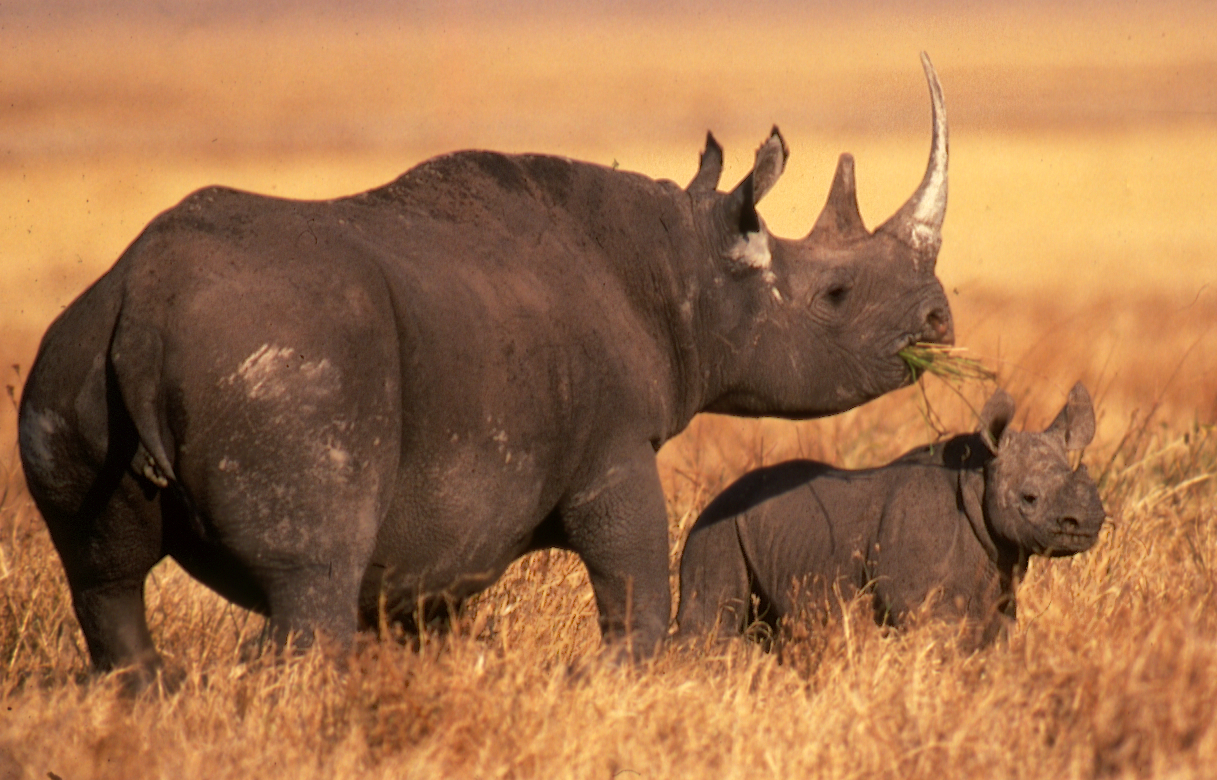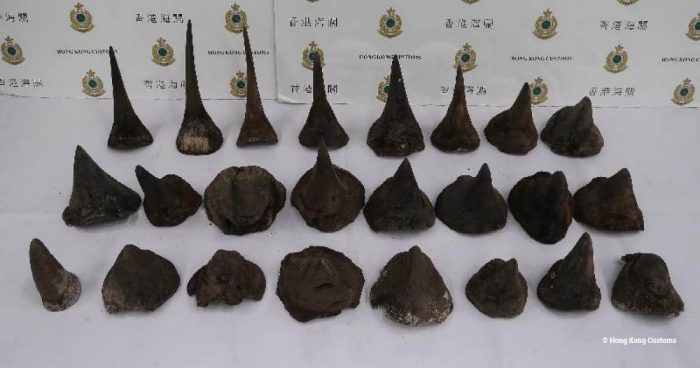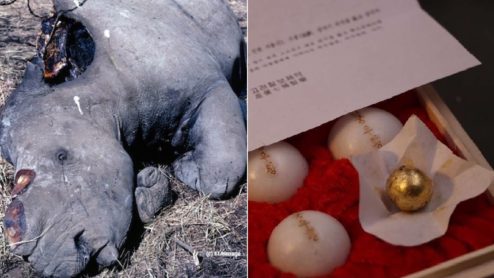Major CITES meeting has a golden opportunity to turn the tide against rhino poachers and traffickers
The latest data on rhino populations, poaching and rhino horn trafficking are in and, while there are some bright spots of good news, the dramatic reduction in white rhino numbers puts Africa’s rhino poaching crisis in stark perspective.
First, the good news. Critically Endangered black rhinos are continuing to grow in number slowly, but steadily. According to the IUCN Species Survival Commission African Rhino Specialist Group (IUCN AfRSG), the continental black rhino population is now 6,195, up from 5,495 at the end of 2017. Greater one-horned rhinos, native to India and Nepal, have increased from 3,588 to 4,124 as poaching rates continue to decline.
These data points suggest that, at least for certain rhino species in select range states, anti-poaching interventions are bearing some fruit. Unfortunately, the same cannot be said for Africa’s white rhinos, which have incurred dramatic losses due to poaching for their horns to meet consumer demand, primarily in China and Vietnam.

(c) EIA
From the end of 2012 to the end of 2021, white rhino populations plummeted by 25.2 per cent to an estimated 15,942 rhinos. Kruger National Park in South Africa has been ground zero for the killing, losing an estimated 77 per cent of its rhinos since 2011; fewer than 2,500 remain in the park today. Poachers have now shifted their sights to South Africa’s Hluhluwe-iMfolozi Park (HiP), which has lost 178 rhinos so far this year. Unless something changes, 2022 is on track to be the worst year for poaching in KwaZulu-Natal province in living memory.
In neighboring Botswana, once considered a safe haven for rhinos, poachers descended on the Okavango Delta and have devastated the country’s wild white and black rhino populations; black rhino population crashed by 54 per cent and white rhinos saw declines of 46 per cent, with only an estimated 242 white and 23 black rhinos hanging on in Botswana. The poaching became so bad that Botswana last year took the draconian step of capturing and relocating all surviving rhinos in the Delta, but exactly how many were left alive by then is unknown.
Organised crime, corruption and challenges with sharing information between and among countries affected by rhino poaching and trafficking are all contributing to the ongoing poaching of rhinos and illegal trade in their horns. These are complex problems, to say the least, but in November 2022 the world’s governments will be in a position to try to do something about them.
From 14-25 November, the 19th Conference of the Parties (CoP19) to the Convention on International Trade in Endangered Species (CITES) will convene in Panama City, Panama, to discuss the world’s most pressing wildlife trafficking and trade issues. Rhino horn trafficking will be among the matters considered by CITES Parties.
The Parties will review the poaching and population figures laid out in this blog, along with a huge volume of information on rhino conservation issues detailed in a report prepared by the IUCN African and Asian Rhino Specialist Groups and TRAFFIC. Parties will then deliberate on a suite of decisions directed at specific Parties to try to obtain additional information and improve the measures being taken to prevent rhino poaching and illegal trade.
EIA will be on the ground at CoP19, advocating for Parties to adopt strong, targeted decisions that will spur improved transparency from key countries, increased information sharing among Parties and strengthened collaboration on intelligence-led investigations into the organised criminal networks controlling the poaching and trafficking.
EIA is particularly concerned by the lack of transparency from Botswana, given the severity of the poaching it has been experiencing. It was the only rhino range state which did not make its 2021 poaching data available to the IUCN AfRSG, did not report any information on law enforcement outcomes and reportedly made only made two seizures (of three rhino horns) since 2018, despite losing more than 100 rhinos to poaching during that time (see the report linked above). EIA will be pushing hard for CITES Parties to provide critical oversight to the rhino poaching situation in Botswana and the trafficking of horns out of the country.
In order to bring all countries to the table to develop strategies to eliminate rhino poaching and trafficking and to improve communication by building relationships among enforcement officials, CoP19 will consider reconvening the CITES Rhinoceros Enforcement Task Force. The Task Force last met nearly 10 years ago and brought together 52 representatives from 21 countries to develop enforcement strategies and actions that are still reaping benefits for rhinos today.
EIA strongly supports reconvening the Task Force so that rhino range, transit and consumer countries can develop fresh approaches to address today’s challenges to preventing rhino poaching and rhino horn trafficking.
There have also been two proposals submitted to CoP19 that would weaken protections for rhinos. The first, submitted by Eswatini (formerly Swaziland), seeks to overturn the CITES ban on international commercial trade in rhino horn to allow it to sell rhino horn from its 98 white rhinos.
The other, submitted by Namibia and Botswana, would move Namibia’s white rhinos from CITES Appendix I (no commercial trade) to Appendix II (commercial trade allowed with an export permit), with an annotation to allow trade exclusively in hunting trophies and live animals for in-situ conservation purposes.
The proposal by Eswatini is nearly identical to proposals it submitted to CoP17 and CoP18, which CITES Parties resoundingly rejected and which dangerously downplays the risk of increasing demand for rhino horn and the impact this would have on rhino poaching and illegal trade. Namibia’s white rhino population is small at only about 1,200 animals and continues to be targeted by poachers while the proposal itself lacks key details, not least of which is how the funds envisioned from increased rhino trophy exports and live animal sales would actually contribute to rhino conservation.
Now is not the time to weaken CITES protections for rhinos and EIA is calling on CoP19 to reject both proposals.
CITES CoPs come around only once every three years and are the only time all the world’s governments convene in one place specifically to talk about how to protect threatened wildlife from poaching and illegal trade.
While there is no silver bullet to magically solve the rhino poaching crisis, CITES CoP19 presents an excellent opportunity to take meaningful actions to turn the tide against the poachers and traffickers. For the rhinos’ sake, CITES cannot afford to waste this moment.





